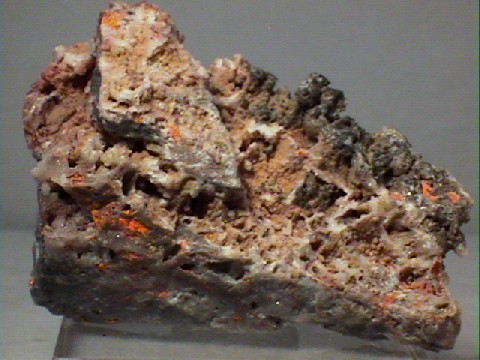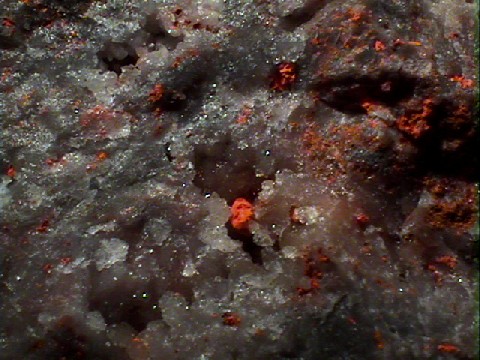 THE MINERAL MINIUM
THE MINERAL MINIUM
- Chemical Formula: Pb3O4, Lead Oxide
- Class: Oxides and Hydroxides
- Group: Spinel
- Uses: As a minor ore of lead, a pigment and as mineral specimens.
Specimens
Minium gets its name from the Minius River in Northwest Spain. The name, minium has also been applied to cinnabar, a red mercury sulfide, but now it is exclusively used world wide to refer to the red lead oxide. Minium is more well known to the makers of pigments than it is to mineral collectors. The artificially produced minium is used as a pigment in paints and dyes although the health concerns of lead have greatly diminished this role.
Minium is a member of the Spinel Group of oxide minerals. The general formula for the Spinel Group is AB2O4. Minium with its formula of Pb3O4, may not look like it belongs. But the lead in minium is actually composed of two different valence states (Pb +2) and (Pb +4). If its formula is rewritten with the different valence states indicated then the formula appears as in classic Spinel Group form as (Pb +4)(Pb +2)2O4. The two different valences of lead occupy different locations in the spinel type structure. Minium's structure is not exactly the same as spinel as spinel is an isometric mineral and minium is a tetragonal mineral. The small size of the lead ions, no doubt, cause a distortion in the spinel structure.
PHYSICAL CHARACTERISTICS:
- Color is red, scarlet to brick-red.
- Luster is greasy to adamantine.
- Transparency: Crystals are opaque.
- Crystal System is tetragonal; bar 4 2 m
- Crystal Habits include scaly aggregates and powdery coatings on other lead minerals. Also massive and granular. Crystals are generally well striated.
- Cleavage is perfect in several directions.
- Fracture is uneven.
- Hardness is 2.5 - 3.
- Specific Gravity is 8.9 - 9.2 (Well above average for any mineral).
- Streak is orange yellow.
- Other Characteristics: Some specimens
fluoresce an orange color under ultraviolet light. - Associated Minerals include massicot, galena, wulfenite, pyromorphite, mimetite, bindheimite, cerussite, lead, duftite and sphalerite.
- Notable Occurrences include its name originator, the Minius River in Northwest Spain as well as Inyo County, California; several localities in
Arizona; Leadville, Colorado and at the Jay Gould Mine, Idaho, USA;
Broken Hill , New South Wales, Australia; Altai Mountains, Russia; Eifel region of Germany and atLavrion , Greece. - Best Field Indicators are color, crystal habit, streak, density and softness.



